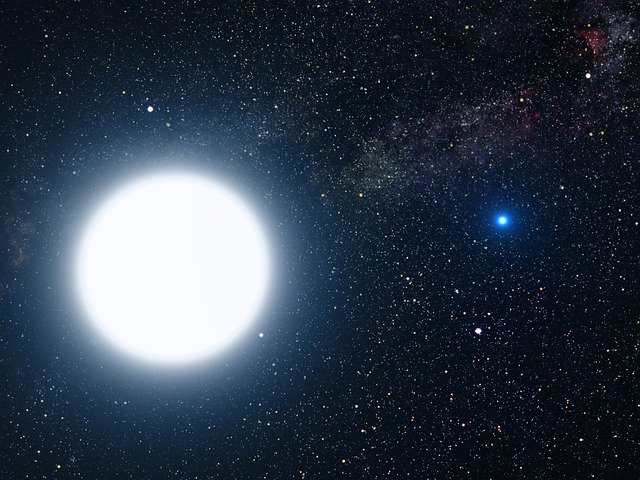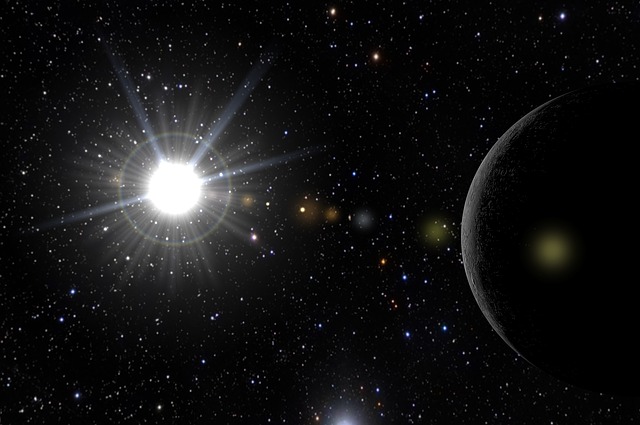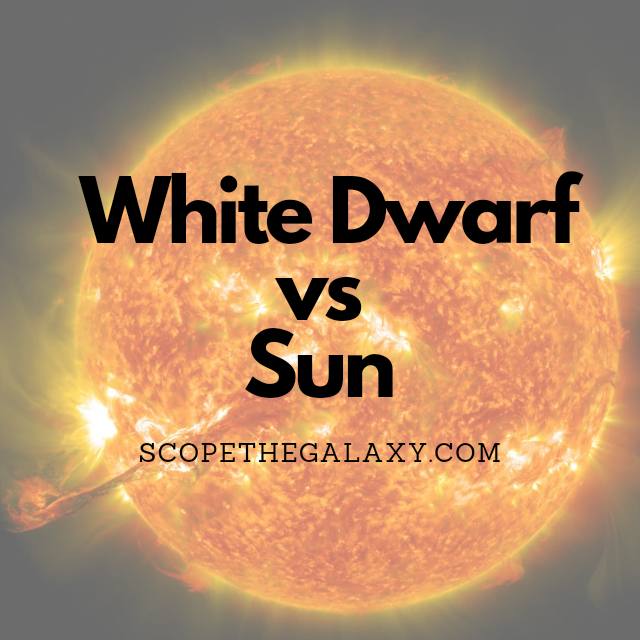*This post may contain affiliate links. This means we may make a commission if you purchase an item using one of our links*
The main difference between a white dwarf and the Sun is that the Sun is still an active star in its main sequence star phase that is stil able to convert hydrogen to helium via nuclear fusion whereas, white dwarfs are the dead remnants of small to medium sized stars (like the Sun) that are below 8 solar masses.
Both are the phases of a star where the sun is at its main sequence star phase and a white dwarf is the dead stellar remant phase. For a more thorough look into the similarities and differences between both celestial objects, continue reading.
What Is A White Dwarf?
Table of Contents

A white dwarf is a small star with an incredible density – while it is around the same size as a planet, its mass is more than 200,000 times that of Earth.
When a star forms, it gathers swirling clouds of dust and gas from its surrounding space to formulate a high-pressure core. The intense pressure creates nuclear reactions within this core that give off a terrific amount of light and heat.
However, the fuel that powers these stars is not unlimited, and one day the star’s finite resources run out. When a star runs out of hydrogen, it begins to conduct reactions with the helium outside of its core. As these reactions expand outwards, the star grows until gravity can no longer hold it together.
At this point, the outer material escapes from the star, leaving behind only the central nucleus, still burning brightly from the initial reactions. This core is known as a white dwarf and marks the final stage of the evolution of a star.
In essence, a white dwarf signifies that a star has run out of fuel and will now cool for a few billion years until it reaches the end of its life cycle.
What Is The Sun?

The Sun is the bright, celestial entity at the centre of our solar system and is also a star that falls under the G type main sequence star bracket (also called a yellow dwarfs), all of which are medium sized stars that tend to be around 0.84 – 1.15 solar masses.
Our Sun is 1 solar mass, making it a medium sized medium star. It’s also on the brighter side for a yellow dwarf, the color that it emits is white as opposed to the slightly yellow that less luminous yellow dwarfs would be.
Of course we still see the Sun as yellow or even red on Earth but, the reason for this significant color shift is because our atmosphere scatters and breaks up the photons that reach us, ultimately changing the true color of the light rays from white to the yellow, orange or red we see in our day to day.
As it is a star, the Sun will actively convert the hydrogen elements at its core into helium, through a process called nuclear fusion.
Nuclear fusion is the reason why it generates light and produces the energy we receive, helping us power machinery, technology, grow crops so on and so forth.
The process of nuclear fusion also affects how hot our star burns, allowing the sun to hit temperatures around 6000°C on a daily basis. This will be the case for another 4.5 – 5 billion years until it’s unable to convert hydrogen into helium.
Once hydrogen cannot be converted, an imbalance between the inward and outward forces keeping the Sun together will occur, causing an imbalance which would result in our Sun bloating up many many times its current size.
When this happens it will enter its red giant phase, where it’ll be around 256 times larger than it is now.
This phase will last for around a billion years until it sheds it mass through a process called planetary nebula, leaving behind only a dead white dwarf remnant.
Similarities Between A White Dwarf And The Sun
The Sun is one of many different smaller stars below 8 solar masses that will become a white dwarf when they’re unable to convert hydrogen to helium through thermonuclear fusion.
Both stars will either go through a planetary nebula phase or already have gone through the phase, where once they cannot sustain being a red giant, they will begin shedding their mass before becoming a white dwarf.
Differences between A White Dwarf And The Sun
There are a large number of differences between the two. Afterall they are in different phases of a stars lifecycle.
These differences include the following:
- The Sun is an active main sequence star whilst a white dwarf is the stellar remnant of a star once it is unable to conduct nuclear fusion.
- White dwarfs have a solar mass of around 0.15 – 1.2 whilst the Sun is 1 solar mass.
- The Sun is brighter and more luminous than a white dwarf as they are the bigger of the two entities.
- White dwarfs are more dense than the Sun where on average they are deemed to be 200,000 times more dense.
- The Sun is around 6000 dgerees celsius whilst white dwarfs are scorching hot in comparison, reaching temperatures around 100,000 degrees celsius at their hottest
- The Sun among other yellow dwarfs are belived to have a lifespan that extends for 10 billion years whilst white dwarfs have an estimated lifespan between 10 billion to a quadrillion years.
- Your average white dwarf will have a diameter similar to that of our Earth, falling between 12,500 – 13,500km whereas the Sun is around 100 times bigger at 1.39 million kiliometers in diameter. The smallest recorderd white dwarf however is only 4,300km so, the range can be vast. Nevertheless, the Sun will always be bigger than any white dwarf within the universe.
- If in a binary star system, a white dwarf can go supernova however, the sun will never go through a supernova phase when dying
- No more nuclear fusion occurs within a white dwarf which is why they are classified as a dead. Nuclear fusion does still transpire within the Sun.
Summary
As mentioned numerous times above, a white dwarf will be what our Sun eventually becomes however, this isn’t set to be the case for another 4.5 – 5 billion years.
For now, it’s in the active main sequenece stage, converting hydrogen to helium and providing energy for all our activities on Earth and around the solar system too.

